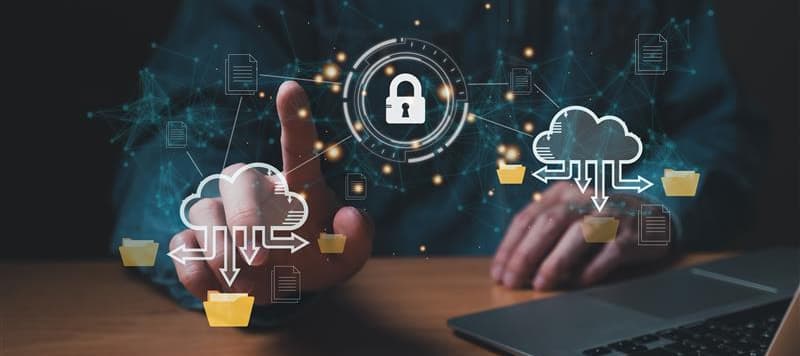Summer is upon us. For some, it’s a time to get in shape. But fitness goals shouldn’t just be physical in nature. Everyone should practice healthy digital fitness, too. After our bodies, we depend on our computers to go about our daily routines. So, it’s worth investing time and effort to make sure we’re as digitally healthy as we can be.
Whether it’s for personal use or for business, our devices need attention so they continue to serve our needs. With that in mind, we talked with Carbonite Vice President of Product Management, Jamie Zajac about digital fitness – and cyber resilience – for both individuals and businesses. Be sure to add the following tips to your summertime fitness goals.
How is cyber resilience similar to physical fitness?
If you ignore either one, it only gets worse and never gets better on its own. It’s usually not the first thing you think of each day, but that doesn’t mean it isn’t important. Digital fitness is part of being cyber resilient. Like your body’s immune system, cyber resilience is a measure of how resistant you are to cyber threats, like computer viruses. It’s also a measure of your ability to bounce back after an adverse event, like data loss or hardware failure. These are all part of being digitally fit, and they’re essential today, whether for your own personal reasons or if you have important business data you need to protect.
What are some things individuals and businesses can do to maintain healthy digital lifestyles?
One of the most important things you can do is change your passwords, especially if you’re reusing passwords across multiple sites or devices – or between your personal and work devices. Cyberthieves are very good at compromising passwords. And if you’re using the same password more than once, you’re opening up more opportunities for cyberthieves to inflict damage. So, make sure you have a unique password on each site and that your work passwords are different from your personal ones.
For businesses, make an investment in cyber-awareness. Train yourself and your people on best practices and risks. Be vigilant about the applications you run and links you click on. Be skeptical before clicking unfamiliar links. And be sure to have a strong security suite in place. There is no one silver bullet, just like you can’t exercise just a single muscle. So, you need a multi-layered security solution that includes both preventive measures, like antivirus, and reactive ones, like backup.
Backup is your safety net. It’s like lifting weights with a spotter. You may think you’re ready to do 10 reps in the squat rack, but you should have a spotter just in case. Backup is critical for being able to turn back the clock on adverse events, like ransomware and accidental file deletion.
What are the consequences of neglecting to maintain a healthy digital lifestyle for both individuals and SMBs?
Neglecting digital fitness eventually catches up with you. When it comes to data loss and downtime, it’s not a matter of if but when. Eventually, you’ll experience a data breach or data loss, and the impact can be huge. Many businesses that experience a data breach or data loss go out of business. For individuals, they may lose important photos or tax documents. For businesses, it could be compliance data, regulated, data, customer contracts or intellectual property. The cost of losing data like this can run in the tens of thousands. So, it’s worth the investment to protect yourself before it happens.
Exercise is only helpful if it’s done on an ongoing basis. What ongoing practices should people be mindful of to protect themselves digitally?
It’s important to test your backups regularly. Make sure you can recover what you need before a disaster strikes, when recovery becomes far more urgent.
Review your disaster recovery (DR) plans. Know what you’ll do for the range of adverse events you could possibly face. For example, for small-scale disruptions like lost files and folders, you’ll want to make sure you can recover from a local source because it’s faster than recovering from the cloud. And for larger events, like fires, floods and regional outages, you’ll want to make sure you have backups in the cloud because you may be cut off from your local network.
Review your toolset and posture. When your environment changes, you need to change your protection, too. If you’ve recently virtualized or transitioned to cloud apps like Microsoft 365, don’t assume the vendor provides the same DR toolsets that you had on-premises. They don’t.
Remember that age is a factor when approaching cyber resilience. Older systems need different types of maintenance, just as the exercises you do in your youth are different from the ones you do as you get older. IT systems and applications need ongoing software updates and security patches as they get older and vulnerabilities become exposed.
There’s only so much we can do on our own before we have to seek medical intervention from a doctor. What are the scenarios where people may want to reach out to an IT expert to address a digital health issue?
If you’ve been breached and aren’t sure how to respond, you should reach out to an IT pro or you could make the situation worse. If you’ve had recent changes on your IT team, you may want someone to review your DR strategy and determine if any gaps exist. If you’ve recently changed your business, such as moving to the cloud, or changed the way data is processed, you should examine how it affects your data protection systems. For example, if you quickly enabled remote employees during COVID, have a checkup to make sure things are securely configured and any new assets are protected, like Microsoft Teams.
Carry it forward
Summer eventually comes to an end, along with a lot of our healthy fitness goals. But digital fitness is something we should practice year-round. You never know when you’ll experience a malware infection or lose important data. So, don’t let your guard down at any time of the year. Ensure your computer and systems are cyber resilient this summer and all year long.










